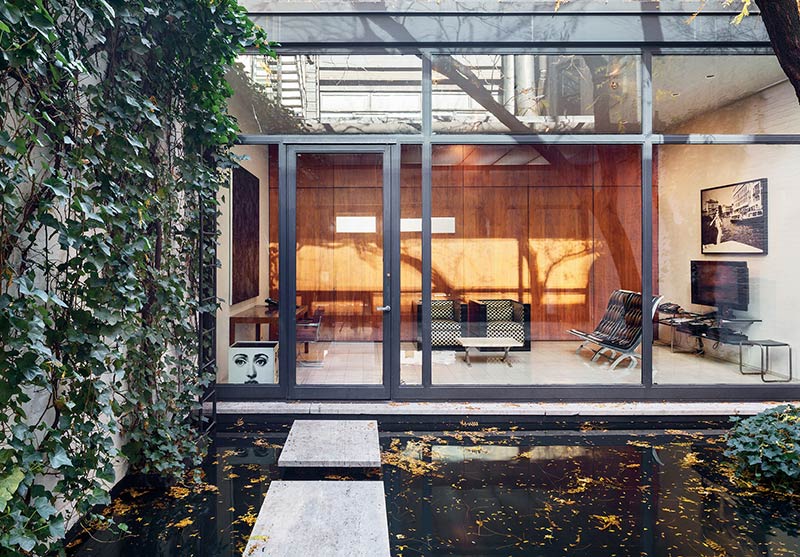On a quiet block in the East 50s in Manhattan, set between a music school and a prewar apartment building a coin’s toss from the noise of subway construction, sits a discreet, Modernist marvel: Philip Johnson’s 1950 Rockefeller Guest House. One of several private New York residences the architect designed, the house is a designated historic — as well as architectural — landmark. Yet one would be forgiven for overlooking the unadorned brick-and-glass facade; the house doesn’t give up its secrets easily.
New York is not a city that always protects, much less values, its architectural heritage. For evidence, one must only head west on 52nd Street, to the recently shuttered Four Seasons restaurant, designed by Johnson with Ludwig Mies van der Rohe, his “guru.” Yet the Rockefeller Guest House stands virtually unchanged, the best preserved — and yet least known — of Johnson’s New York works. Inside, the brick walls could recite a firsthand history of the 20th century’s art world.
The two-story building, one of Johnson’s earliest New York commissions, was built for Blanchette Ferry Hooker Rockefeller between 1949 and 1950, and was intended as both a showcase for her modern art collection and a space for entertaining. The neighborhood of Turtle Bay — described as the East Side’s “riverside back yard” by the 1939 Work Projects Administration Guide — had since the 1920s been an artistic hub of the city, combining a quantity of affordable housing, dedicated studios and elegant enclaves like Beekman Place. Peggy Guggenheim and Max Ernst lived nearby; in the 1960s, the neighborhood played host to Andy Warhol’s Factory. Here was a natural site for the collaboration between the fashionable architect and his patron. […]
A Secret, Little Glass Home in the Heart of New York

Continue Reading – Source: T Magazine


